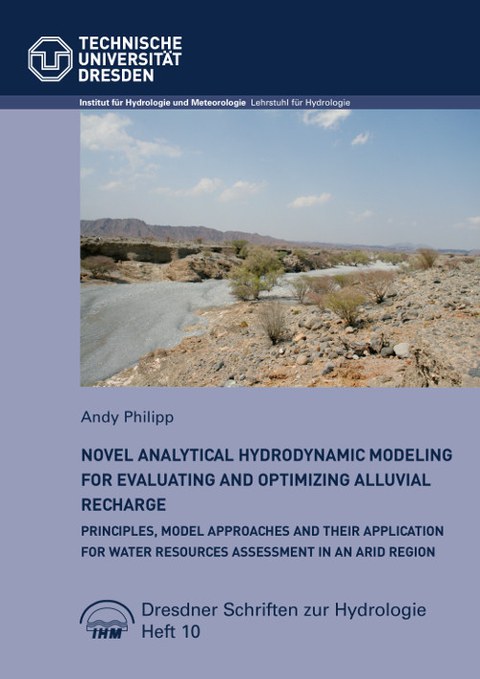Booklet 10
Novel Analytical Hydrodynamic Modeling for Evaluating and Optimizing Alluvial Recharge - Principles, Model Approaches and Their Application for Water Resources Assessment in an Arid Region
by Andy Philipp (2014)
Abstract: This thesis presents a novel analytical solution strategy for the zero-inertia (ZI) equations of free surface flow. These equations are utilized herein for routing flood flow in open channels and for simulating excess rainfall runoff on overland planes. The novel solution approach is shown to be both accurate and robust, especially under the complicated and intricate conditions of infiltrating flow on initially dry river beds or soils, e.g., as present in arid and semiarid areas. This is underlain by comparing modeling results of the novel analytical procedure with those of validated numerical solutions. Furthermore, it is shown that the analytical ZI model can deliver a process-oriented portrayal of runoff concentration in the flood-generating parts of the catchment. Subsequently, the novel analytical ZI model is applied for a real-world water management problem in the Sultanate of Oman, Arabian Peninsula. Within an integrated flash flood routing model—which is also presented in this thesis—the novel analytical routing approach helps in accurately matching the dynamics of advancing and infiltrating ephemeral river flow, established as a consequence of release from a groundwater recharge dam. The integrated modeling system houses the aforementioned analytical downstream model and tailor-made, state-of-the-art modeling components to portray the upstream flow processes, dam operation (including evaporation), and spillway release flow. The proposed modeling system can aid in rendering a realistic image of transient transmission losses and dependent flow dynamics. This is of extremely high importance for water resources assessment, as well as for optimizing recharge dam operation strategies in order to maximize downstream transmission losses and, thus, groundwater recharge.

